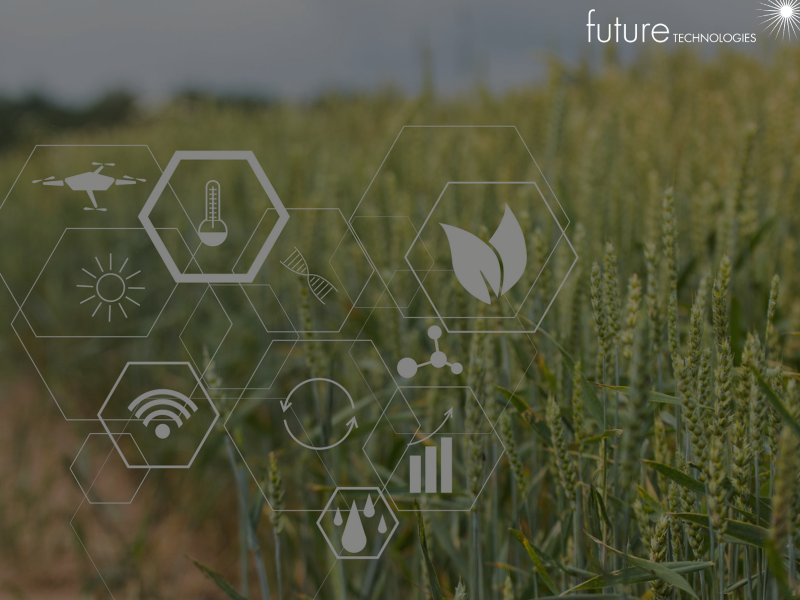

FUTURE TECHNOLOGIES IS PROUD TO SUPPORT THIS GREAT PROJECT.
On a collection of adjoining fields near a university in rural western England, an ambitious farming project aims to show it’s possible to plant, grow and harvest a crop autonomously, using robotics, drones—and potentially 5G.
The case for using 5G in farming shows promise, although the superfast networking technology is only beginning to be applied in the agriculture world. And there have been some kinks in early-stage experiments.
Farmers can benefit from large amounts of data about their crops, and 5G-enabled sensors could help deliver it, measuring if soil needs watering or plants are getting too much sun. Streaming high-quality video over mobile connections could help farmers analyze crops from afar in ways that weren’t possible with earlier generations of cellular technology.
Kit Franklin, a senior lecturer in agricultural engineering at Harper Adams University in England, who co-founded the autonomous farming project, called the Hands Free Farm, says many of the possibilities 5G opened up were enticing. So he and his colleagues signed up to test the new networking technology about three years ago as part of a government-supported initiative called 5G RuralFirst.
Old barn, new technology
Mr. Franklin thought 5G could streamline the farm’s communications, merging them into a single 5G link instead of relying on a mix of Wi-Fi and other radio-transmission technology. He also thought that because of its high speed, 5G could help the farm move away from having hefty computers on board tractors and harvesters and instead do the number crunching required to automatically steer machinery on remote servers in the cloud. Those things could make robotic farming cheaper and more reliable.
“We said, let’s take the smarts off the tractor and let’s try to put the smart stuff, the decision making, into the cloud where computing is cheap,” Mr. Franklin says. “The truck in the field has a GPS receiver, it’s got a camera and it’s sending that information to the cloud and the cloud is working on it.”
About halfway around the world, on a farm in Washington state, a different kind of experiment in the intersection of 5G and farming is taking place. There, a group of big tech companies and cellular carrier T-Mobile US Inc.are joining forces with a county government and farmers on a 5G field lab. It aims to use 5G connectivity to process data from sensors in the field more quickly than is possible with 4G.
Nate Krause, a farmer who is taking part in the project, says his farm has been equipped with sensors that measure moisture in the soil and weather sensors that track microclimates in his apple orchard. Using an app on his phone, he says he can determine when to water the trees or use sun shades to shield crops, and when to spray chemicals that target pests. All of it is powered by a data-processing unit and an antenna in a century-old barn.
“The goal is to make agriculture more efficient,” Mr. Krause says, adding that the big gains sectors such as banking and manufacturing have enjoyed from adopting new technology have largely eluded farms because of their remote locations. Projects like the 5G initiative, he says, are aimed at helping bring some of those gains to agriculture at a time demand for food is rising even as areas being farmed are broadly declining.
Whether investments in 5G will yield returns for farmers remains unclear. The Washington experiment is still under way. And Mr. Franklin’s RuralFirst project in England, a collaboration between academia and private industry, ultimately produced mixed results.
The Hands Free Farm team installed fiber-optic cables near their fields to get ready for the arrival of 5G antennas, but delays in the project’s rollout meant the team wasn’t able to experiment with the technology before the trial ended. The group also realized that some of the data shuffling they wanted could be accomplished with existing 4G connections, and the project already has moved to using that older generation of telecom technology to control its robotic fleet.
Coverage is key
More important than 5G’s speed, Mr. Franklin says, is having robust signal coverage.
“I don’t need a massive amount of data transfer for my robot tractor, but what I do need is a reliable comms link,” he says. “At the moment, what’s going to stop automation in the rural environment is bad communication networks.”
Still, 5G remains promising, and the Hands Free Farm remains interested in exploring how it can use it in robotic farming operations, especially as it becomes more prevalent nationwide, Mr. Franklin says. “It was just a technology maturity thing—it wasn’t quite there yet,” he says.
Anshel Sag, an analyst at Moor Insights & Strategy, says steady growth in 5G coverage, coupled with technological advances and new standards that allow for low-power-consumption devices, bodes well for the technology’s agricultural applications. The big hurdle for 5G in farming is the cost of bringing coverage to rural areas, he says.
“Maybe one of the big pushes that we do in America isn’t only do we facilitate the building of 5G networks, but also the building of 5G infrastructure for agriculture specifically, because agriculture is such a big part of the American economy,” he says.
FOR MORE INFORMATION PLEASE SEE ORIGINAL ARTICLE: https://www.wsj.com/articles/5g-farmers-agriculture-11621870949

